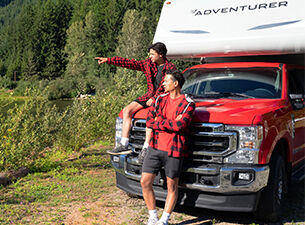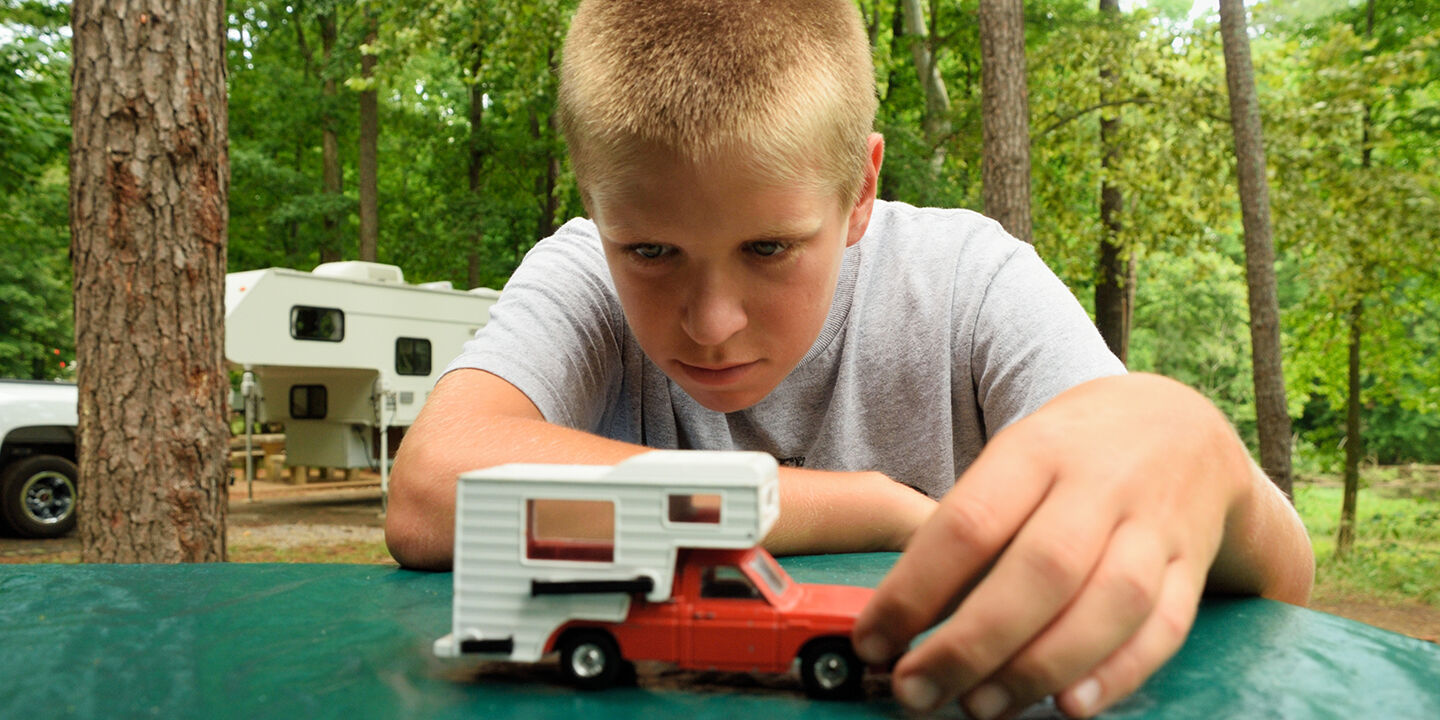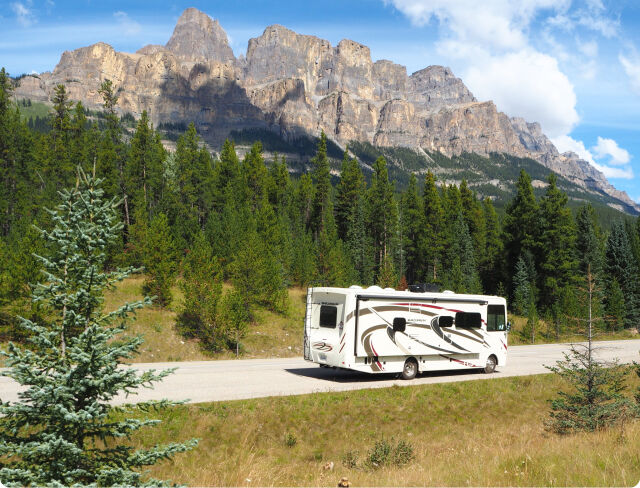
Getting Started
Driver's Ed: 6 Driving Tips For Your New RV

You did it – you just purchased your new RV! You’ve got your owner’s manual, insurance paperwork and a marked-up road map to your first camping destination. You’re ready to go!
“But wait,” you might think to yourself. “How do I drive this rig?! Don’t I need a special license or something?! I don’t even know how to get it off the lot!”
We hear you. The thought of driving or towing a large vehicle can be daunting – especially when you just made a big financial investment in a home on wheels!
Believe it or not, you actually can drive most RVs with a regular driver’s license. That’s something to celebrate, as no one wants to have to take another driving test! Thankfully, if you’re equipped with some tips, there isn’t much to be afraid of. Here are six tips that will help make your RV driving experience a little less daunting.
- Know your limit and drive within it. Do you know your vehicle’s towing capabilities? What about the size of the differential? These answers can be found in your owner’s manual; if you want a second opinion, bring your owner’s manual to your local Fraserway dealer and we will help you find the right RV for your vehicle. The last thing you want is having something break – an expensive break, at that!
- Buckle up – everyone and everything. The first step toward vehicular safety always has been and always will be “buckle up.” With an RV, this applies to the driver and passenger but also to the rest of the living space. Make sure that any loose or unsecured items (i.e., cooking supplies, books, etc.) are put away into a secured storage space. As well, make sure all of your utilities are disconnected prior to leaving a campsite. You don’t want to miss this one!
- Check the tread. Tires get you from point A to point B (and everywhere else), so you’ll want to ensure that your tires are in good shape. Check the pressure to see if they’re at the proper level and keep note of how much tread is left. If the tread is wearing thin, it may be time to replace your tires.
- Bring a trusty sidekick. When you pull up to your driveway with your RV for the first time, you’ll want to have someone on the ground watch you back in and redirect you if needed – especially if there are trees, fences or rocks to navigate. This may take some practice, but you’ll be ready in no time to park your RV at a campsite – or wherever else you park your rig.
- Go back to Drivers’ Ed rules. Does “10 and 2” ring a bell? Those are the two prime spots for placing your hands on the steering wheel, imagining the wheel as a clock. This will give you a good grip, which is crucial since an RV’s path can be impacted by strong winds. As well, think back to that other rule of keeping the length of two full vehicles between you and the vehicle in front. This will help create a safety buffer zone in case the car in front of you comes to a sudden stop.
- Go slow and steady, and you’ll win the race. Whether you’re in a motorhome or towing a trailer, you’ll need to compensate for the extra weight when turning corners. Whenever you turn, be sure to slow down sooner than you would in your regular vehicle, and go extra wide when turning right.







